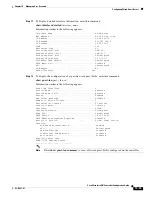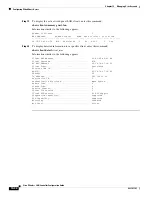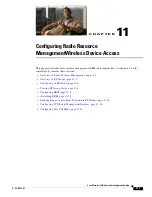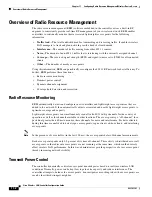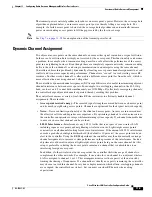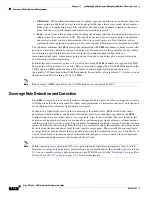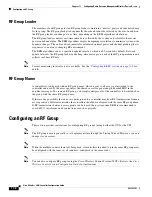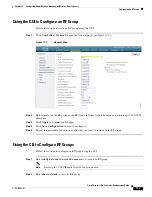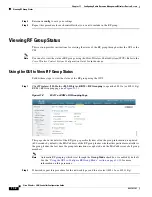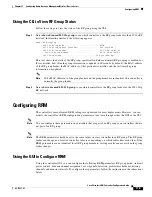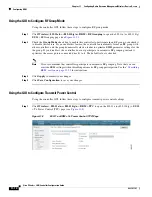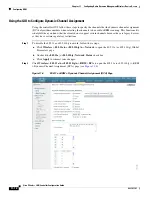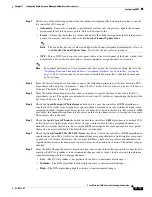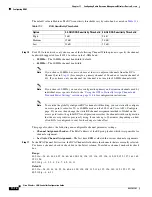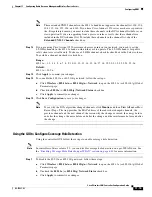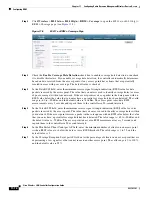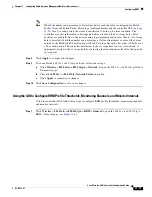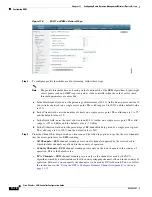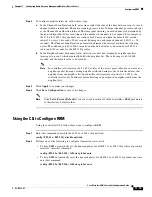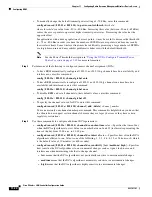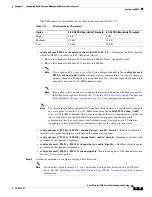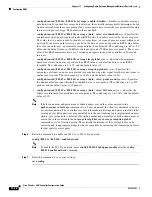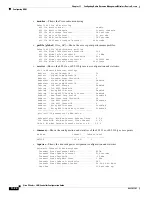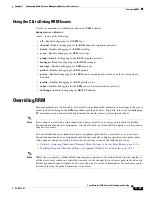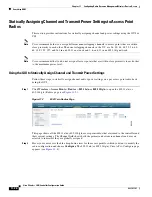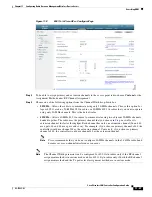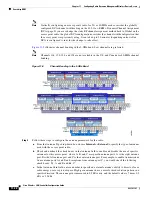
11-13
Cisco Wireless LAN Controller Configuration Guide
OL-17037-01
Chapter 11 Configuring Radio Resource ManagementWireless Device Access
Configuring RRM
Step 3
Choose one of the following options from the Channel Assignment Method drop-down box to specify
the controller’s DCA mode:
•
Automatic
—Causes the controller to periodically evaluate and, if necessary, update the channel
assignment for all joined access points. This is the default value.
•
Freeze
—Causes the controller to evaluate and update the channel assignment for all joined access
points, if necessary, but only when you click
Invoke Channel Update
Once
.
Note
The controller does not evaluate and update the channel assignment immediately after you
click
Invoke Channel Update Once
. It waits for the next interval to elapse.
•
OFF
—Turns off DCA and sets all access point radios to the first channel of the band, which is the
default value. If you choose this option, you must manually assign channels on all radios.
Note
For optimal performance, Cisco recommends that you use the Automatic setting. Refer to the
“Disabling Dynamic Channel and Power Assignment Globally for a Controller” section on
page 11-33
for instructions if you ever need to disable the controller’s dynamic channel and
power settings.
Step 4
From the Interval drop-down box, choose one of the following options to specify how often the DCA
algorithm is allowed to run: 10 minutes, 1 hour, 2 hours, 3 hours, 4 hours, 6 hours, 8 hours, 12 hours, or
24 hours. The default value is 10 minutes.
Step 5
From the AnchorTime drop-down box, choose a number to specify the time of day when the DCA
algorithm is to start. The options are numbers between 0 and 23 (inclusive) representing the hour of the
day from 12:00 a.m. to 11:00 p.m.
Step 6
Check the
Avoid Foreign AP Interference
check box to cause the controller’s RRM algorithms to
consider 802.11 traffic from foreign access points (those not included in your wireless network) when
assigning channels to lightweight access points, or uncheck it to disable this feature. For example, RRM
may adjust the channel assignment to have access points avoid channels close to foreign access points.
The default value is checked.
Step 7
Check the
Avoid Cisco AP Load
check box to cause the controller’s RRM algorithms to consider 802.11
traffic from Cisco lightweight access points in your wireless network when assigning channels, or
uncheck it to disable this feature. For example, RRM can assign better reuse patterns to access points
that carry a heavier traffic load. The default value is unchecked.
Step 8
Check the
Avoid Non-802.11a (802.11b) Noise
check box to cause the controller’s RRM algorithms to
consider noise (non-802.11 traffic) in the channel when assigning channels to lightweight access points,
or uncheck it to disable this feature. For example, RRM may have access points avoid channels with
significant interference from non-access point sources, such as microwave ovens. The default value is
checked.
Step 9
From the DCA Channel Sensitivity drop-down box, choose one of the following options to specify how
sensitive the DCA algorithm is to environmental changes such as signal, load, noise, and interference
when determining whether to change channels:
•
Low
—The DCA algorithm is not particularly sensitive to environmental changes.
•
Medium
—The DCA algorithm is moderately sensitive to environmental changes.
•
High
—The DCA algorithm is highly sensitive to environmental changes.

